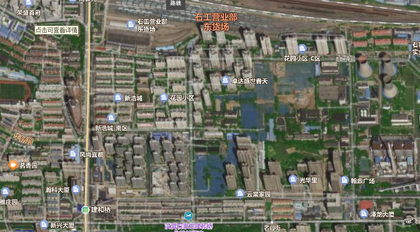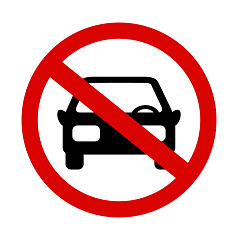Many have the impression that China is a very car-polluted country with heavy traffic and wide streets occupying much of the cities. I think this impression mostly comes from the fact that much of the imagery one sees while hearing news about China is that of multi-lane streets going through cities. What you don’t see in these shots however, are the enormous blocks that lie in between these streets. You can look at the map of any Chinese city, and you will see that the blocks are usually around 500x500 meters. In Soviet fashion, these blocks are big enough to have all of the services one would need during the day, as well as green space. At the same time, there are usually larger parks in the vicinity as well hosting various community activities. All of this is reflected in the fact that China has a very low motorization rate.
If you’re wondering about why these wide streets exist in the first place, one has to understand that these cities are big, and these wide streets are kind of a rare sight when looking at the cities as a whole (although they are very much necessary for car traffic). I would much rather like to see wider streets at a lower cadence than frequently having to wait at shorter crossings. Here in Stockholm, crossings feel like such a headache since they’re so frequent.
These green space developments are most obvious when you go just outside the city center. Here, you will usually find very high density tall housing as seen in the picture above. Having these tall buildings then leaves good amount of space for greenery.

This is a picture of Shijiazhuang, which is far from a tier-one city, and it is also far from being known as a city with greenery (it is stereotypically a polluted city). After looking around a bit in the city center, this was pretty much the most concrete-looking part I could find. You can still see, however, that each block has some amount of green space, and besides, there are big parks just outside of this frame. Shijiazhuang is the city which I will be living in during the coming year due to my upcoming exchange year.
As for public transport, I think we all have an idea of what the situation looks like.
Really reminds me of the microdistrict style city planning that USSR did, it works really well.
mikroraions kick ass
Glad to hear the automobilism is being rejected. Really it was one of my biggest worries about the direction China is going, that there seemed to be lots of cars, but I had yet to make an investigation and I like what I’m hearing :)
I admit, i am very envious that you get to go there for a whole year. China’s style of urban development looks awesome. Still a lot to improve but the strides i’ve seen have been massive.
It is also easy to underestimate the amounts of greenery that can develop around these concrete structures over time. When I was still a university student, many of my lecture halls were in a monstrous 1970s research complex made from concrete, and it was overgrown with wisteria flowers to such a point that there were several incidents of bicycles being crushed and deformed under the falling foliage
It’s beautiful
reminds me of this glorious video where CityBeautiful lauds just how good Soviet urbanism was https://youtube.com/watch?v=JGVBv7svKLo&feature=shareb
What would you say the pros and cons of this layout are compared, to, say, Seoul or Tokyo? I’ve always thought Tokyo was pretty close to “peak city,” but I’m sure there are tradeoffs everywhere.





